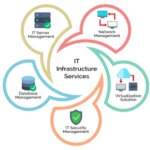Securing Telecommunications in Remote Work Settings
As remote work becomes more common, securing telecommunications in remote work settings is crucial. With employees working from various locations, ensuring the safety of communications and data has never been more important. Here’s how to safeguard your telecommunications systems effectively.
Use Strong Authentication Methods
One of the first steps in securing telecommunications in remote work settings is implementing strong authentication methods. This means using multi-factor authentication (MFA) to verify users. MFA combines something you know (like a password), something you have (like a smartphone), and something you are (like a fingerprint) to create a layered defence. This makes it much harder for unauthorized users to gain access.

Encrypt Data in Transit and at Rest
Encrypting data is another key measure for securing telecommunications. Data encryption ensures that information sent over the network is unreadable to anyone who intercepts it. Similarly, encrypting data at rest protects files stored on devices or servers from unauthorized access. This dual-layer approach helps secure sensitive information both during transmission and while stored.
Implement Secure VPN Connections
For remote workers, using a secure Virtual Private Network (VPN) is essential. A VPN creates a private, encrypted connection over the internet, allowing employees to access company resources safely. It masks the user’s IP address and encrypts their online activities, making it more difficult for hackers to intercept and exploit data.
Regularly Update Software and Systems
Keeping software and systems up to date is crucial for maintaining security. Updates often include patches for vulnerabilities that could be exploited by attackers. Regularly updating your telecommunications software and systems ensures you have the latest security enhancements and reduces the risk of breaches.
Monitor Network Traffic
To effectively secure telecommunications, it’s important to monitor network traffic continuously. By analyzing traffic patterns and identifying unusual activities, you can detect potential threats before they become serious issues. Network monitoring tools can help in spotting anomalies that may indicate a security breach.
Educate Employees on Security Best Practices
Educating employees about security best practices is vital. Remote workers should be aware of how to recognize phishing attempts, avoid malicious links, and use secure passwords. Regular training and updates on security protocols can help employees stay vigilant and protect their telecommunications systems.
Implement Access Controls
Access controls limit who can view or use specific information and resources. By setting up user permissions and restricting access based on roles, you can ensure that only authorized personnel can access sensitive data. This minimizes the risk of internal threats and accidental data exposure.
Use Firewalls and Antivirus Software
Firewalls and antivirus software are essential for protecting telecommunications networks. Firewalls act as a barrier between your network and potential threats from the internet, while antivirus software detects and removes malware. Both tools are critical for defending against cyberattacks and ensuring a secure remote work environment.
Backup Important Data Regularly
Regular data backups are a crucial part of any security strategy. In the event of a data breach or system failure, having recent backups ensures you can recover lost information quickly. Backup systems should be secure and stored in multiple locations, including offsite or cloud-based storage.
Secure Communication Platforms
Ensure that any communication platforms used for video conferencing or messaging are secure. Use platforms that offer end-to-end encryption and have strong security measures in place. This helps protect your conversations and data from unauthorized access.
Implement Secure File Sharing Practices
When sharing files remotely, use secure file-sharing practices. Utilize encrypted file-sharing services and avoid using unsecured methods like personal email accounts or unprotected cloud storage. Ensuring that files are shared through secure channels protects sensitive information from being exposed.
Conduct Regular Security Audits
Regular security audits help identify potential vulnerabilities and ensure that security measures are effective. By reviewing and assessing your telecommunications systems regularly, you can address weaknesses and improve your security posture.
Establish an Incident Response Plan
Having an incident response plan in place is essential for managing security breaches. This plan should outline the steps to take if a security incident occurs, including how to contain and mitigate the damage. An effective incident response plan helps ensure a swift and organized response to any security issues.
Secure Remote Devices
Ensure that all remote devices used by employees are secure. This includes implementing security measures such as encryption, strong passwords, and remote wipe capabilities. Securing remote devices helps prevent data breaches if a device is lost or stolen.
Conclusion
Securing telecommunications in remote work settings requires a multifaceted approach. By implementing strong authentication, encrypting data, using secure VPNs, and educating employees, you can protect your communications and data. Regular updates, monitoring, and employing security tools further enhance your defences. With these strategies, you can create a secure and efficient remote work environment.



